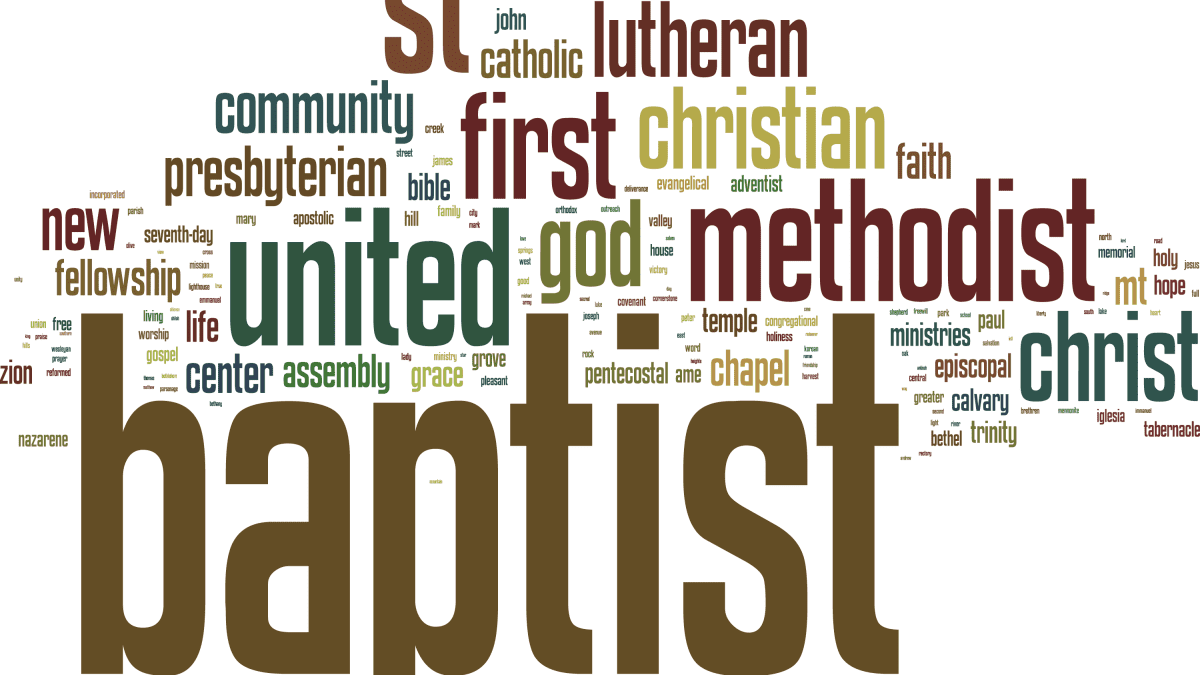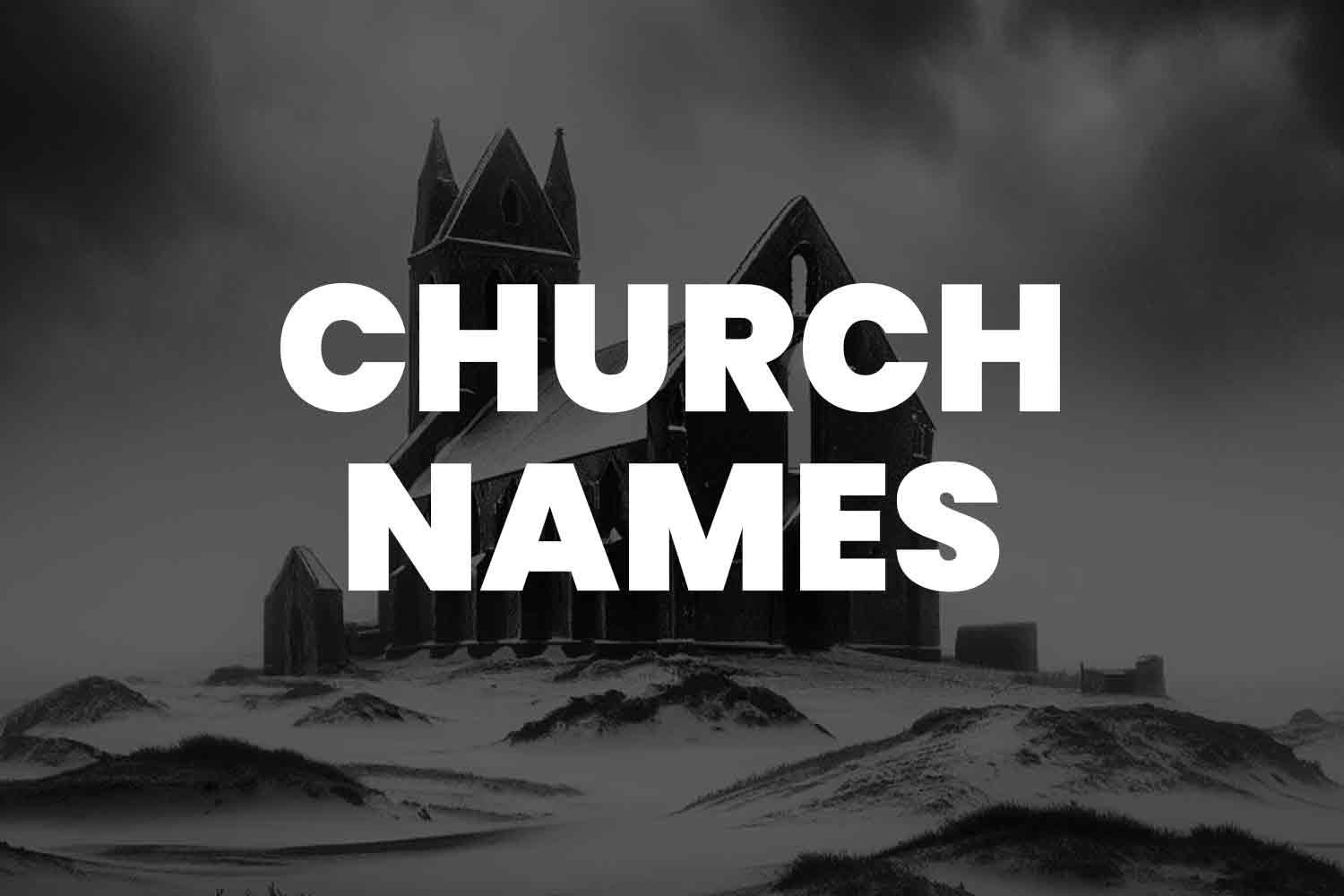Church names have always mattered as identifiers and descriptors of the faith, mission and history of the folks in the pews of the congregations they represent. A church’s name functions like an advertisement for a neighborhood, so a name good enough will attract the spiritually starving, the codependent and the aligned. These names are more than titles, though, they represent the theological beliefs, historical moments and cultural identities of the people who practice within their walls.
The naming of churches has meaning as it reflects devotion, reverence, and purpose; and its significance goes back to the days of the birth of Christianity. Whereas today you still see church names changing as society’s nature changes in the same way that they are still changing to reflect faith, tradition and values. ༚ This post looks at the history and theology of naming, creative church names, a few examples from cultures, and highlights some biblical challenges to the way churches are named and how the name defines and shapes the faith experience.
Powerful Things—The names of the church through the ages
As though Church names is ancient, though it dates back to ancient and early Christianity indeed. In the early age of Christianity, the churches were named for saints, apostles or martyrs. Those names were chosen in a recognition of persons who had gone above and beyond in faith and devotion, and who provided examples for the church. Churches dedicated to these and other figures (Saint Peter, Saint Paul etc) commemorated founders of the Church names whose major contributions were significant. As Christianity spread across the map, however, local customs started to influence the naming of the Churches. As in medieval Europe, churches were often named after local saints and great Biblical events or miracles in the area. Cathedrals such as “Notre Dame” (Our Lady) in Paris and “San Marco” (Saint Mark) in Venice are prime examples of this blending of religiosity and cultural self-image.
Name your place After settlers moved to new places, they often brought naming traditions adapted to their new experiences and faith journeys. A chapel named something like “Pilgrim Chapel” or “Providence Church” reflected an attitude of thankfulness and reliance on God to guide them as the early settlers faced the dangers of touching land and surviving.
Welcoming but not Sacramental Names for A Church
Theological considerations have never been irrelevant to what churches call themselves. Names like “Calvary Chapel” and “Bethlehem Baptist Church” draw from the stories of the virgin birth of Jesus Christ and from the worship of a crucified Jesus to plant the congregation within the core stories of Christianity.
Other church names have names deriving from divine qualities or attributes, “Grace Church,” “Faith Assembly” or “Hope Fellowship,” for instance. These are more than bittersweet reminders of the focus and spiritual aspirations of the church names community. For some congregations, the naming is informed by eschatology. “Mount Zion Church” and “New Jerusalem Assembly,” for instance, point to the promise of a heavenly age and the coming of God’s kingdom. These names serve as symbols of promise and potential, echoing loudly in the hearts of believers.
Cultural Norms (Regional Influences)
In rural America, churches often have names that reflect their natural environment: “Cedar Grove Church,” or “River Valley Fellowship.” These names suggest love of the land, and of the community’s agrarian origins. Unlike churches in most rural or small-town settings, oftentimes urban churches want a name that reflects the vibrancy and the life of both the city and the urban center.
You see stain-glass windows from European traditions in multicultural areas, and church names often show pockets of heritages among worshipers. Names like “Iglesia de la Paz” (Ogden) or “Korean Grace Church” (Midvale) reflect linguistic and cultural diversity and foster belonging and unity.
Boldness in Naming a Church in the Modern Era
These practices have helped to make churches more market-friendly, since the churches of today prefer more alien names than time-honored traditions. These names are about connection, about accessibility, about being memorable, as appropriate to younger generations or the unchurched. Names like “Elevation Church,” “The Summit,” or “Journey Church” evoke growth, transformation and spiritual adventure. Titles like “The Well” or “The Table” center on community and hospitality, even inviting the individual into community and common practice. Some churches name themselves for spirits, often added metaphorically for a sense of mission or vagueness. “Mosaic Church,” for instant, reflects diversity and togetherness, while “Illuminate” suggests enlightenment and clarity.
The Nomenclature of the Church
A church names is an important tie to the community where a congregation serves. It reflects the church’s mission, values and vision, and often makes first impressions and establishes expectations. Names that suggest inclusion — like “Unity Church” or “Open Door Ministries” — offer a positive message that the church names is a safe and accepting place. For churches that do a lot of social ministry, names such as “Good Shepherd Mission” or “Hope Center” highlight their ministry of service and love. That distinctive name can also instill a sense of pride and belonging among congregants that reinforces the notion that they’re more than just a collection of people.
Challenges in Naming Churches
Challenges, Church names Choose Aversion to Coplication in a High Church Area One common challenge is to avoid duplication, especially in a high church area. You must choose a name that no one else has in order to not compoumd confusion. It’s also tricky to balance tradition with modernity. Long-established congregations may bristle at anything that doesn’t feel familiar, that has loose ties to their history, and newer congregations are in need of names that reflect who they are but still feel new and local.
Then there is the practical side of the process, including theological fit and brand. A name has to be representative of the church’s values, mission, or audience, so that it will appeal to its current members while also reaching out to engaged newcomers.
New Trends in Church Naming
Trends in endowing church names change as a society evolves. But symbolic names are also becoming increasingly popular. The names evoking sanctuary, refuge or beacon are largely references to this sense of safety, hope and guidance for those seeking comfort and spiritual replenishment. Other trends include a number of multilingual names that broadly honor the Languages and cultures of modern congregations and the embrace of inclusivity.
The Future of Church Naming
Only time will tell where the body of Christ will wind up in the 21st century as far as the naming goes. It included a bit of analysis of how names would change — as churches modernize to reflect the needs of their communities, names will focus on their accessibility, relevance and connection.
Digitalization will also have effects on naming, as churches will take names that both personalize their parish and are powerful for online searching and branding. It could lead to more creative and unique juxtapositions that better reflect the church’s mission in new ways.
Conclusion
There is no such thing as a church names that is simply a name — it is a powerful statement of identity, mission and faith. It is a crossroads between tradition and modernity, a point of intersection between the congregation’s past, present and future. Whether discovered in Bible stories, derived from theological concepts, or shaped by cultural influences, church names narrate the story of a community’s spirituality.
Church names holds rich significance, whether it be the saints and martyrs that once graced the throne, to more contemporary values. They are invitations to fellowship, markers of common beliefs and testaments to the enduring nature of faith. The “names” of churches will remain long after their buildings have been transformed or simply vanished into the dust of history, stimulating future generations.











